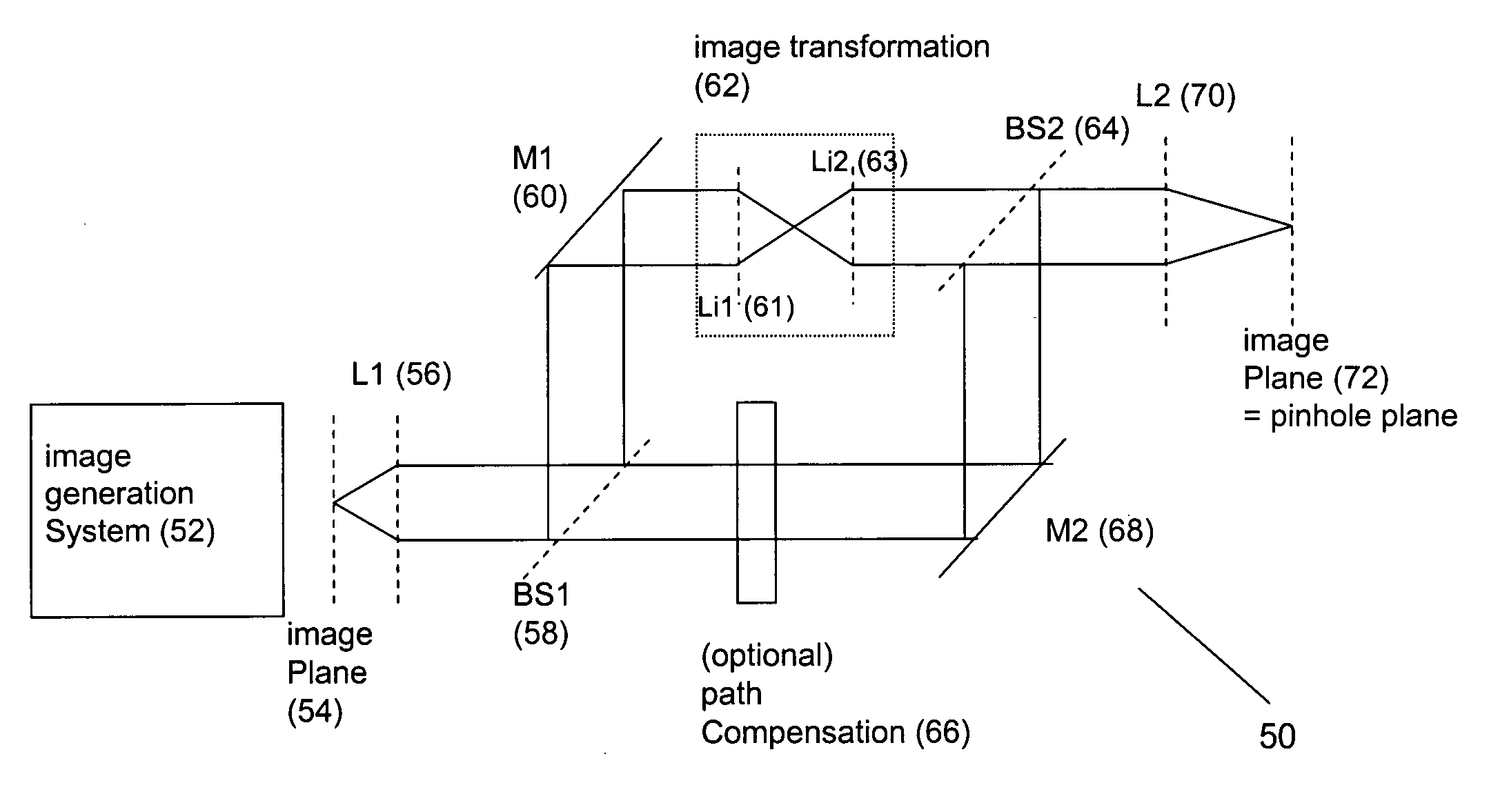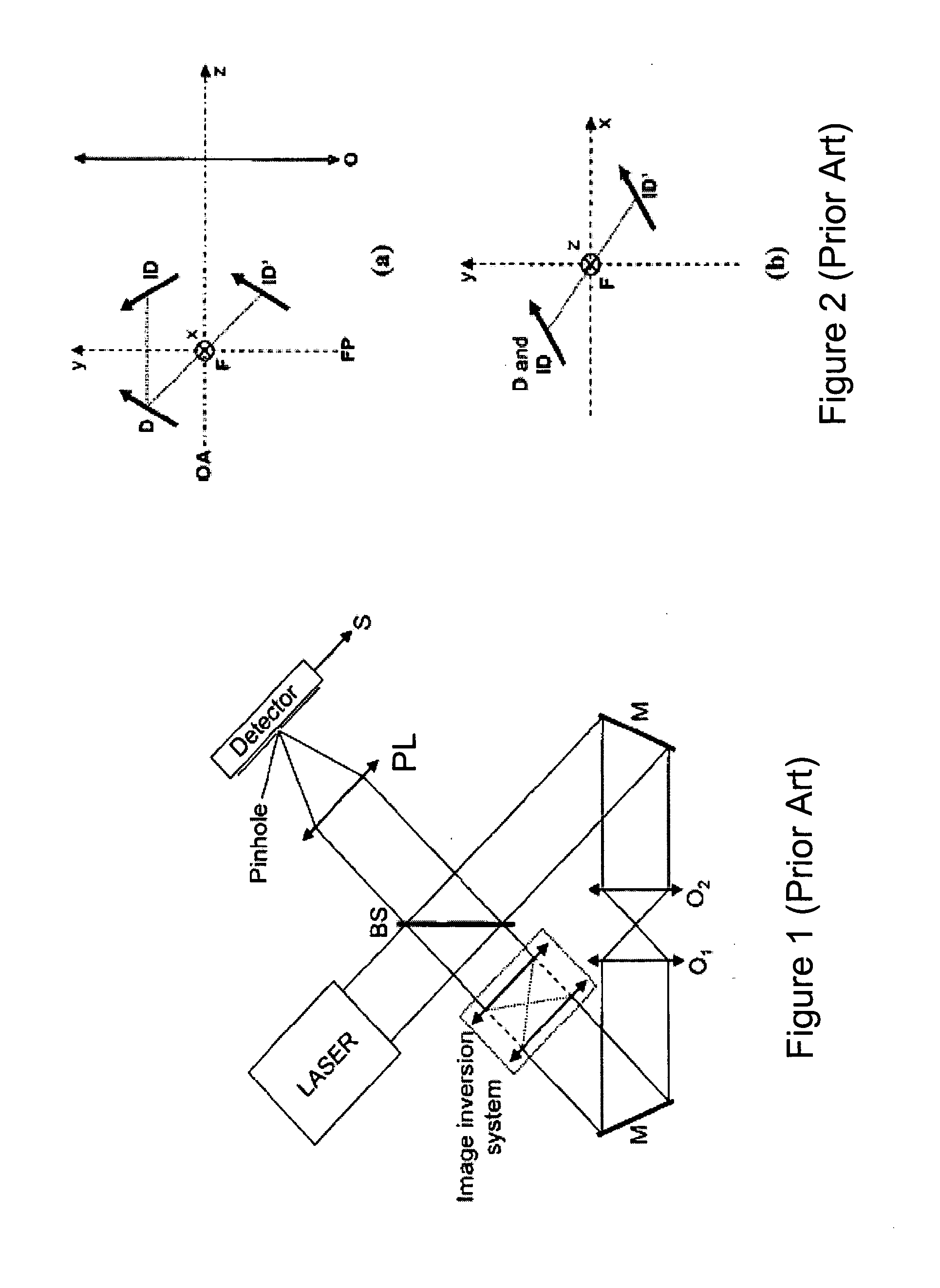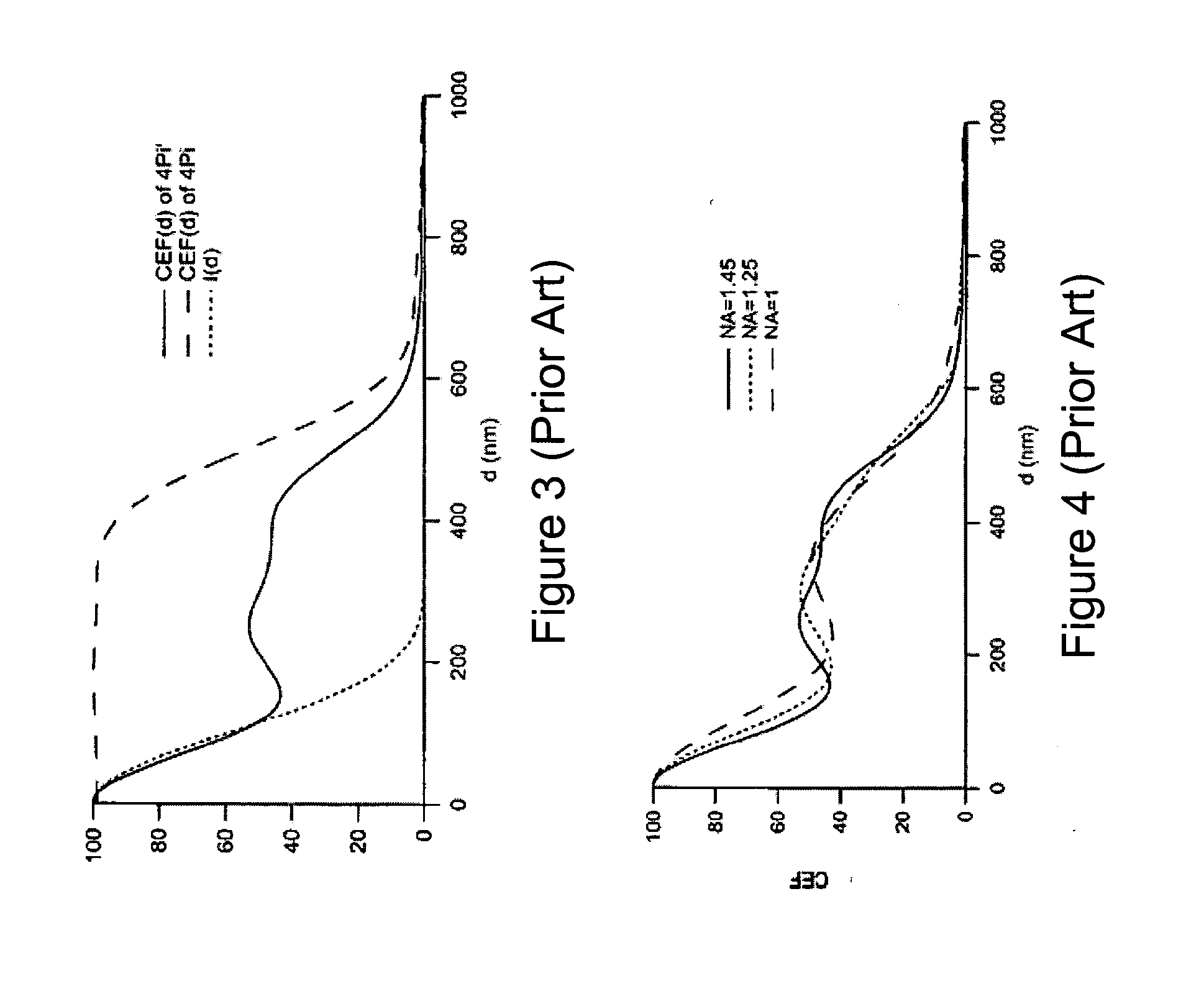Method and Apparatus for Improving Image Resolution
a technology of image resolution and apparatus, applied in the field of methods and apparatus for improving image resolution, can solve the problems of reducing the signal quickly, affecting the image resolution, and the cost of buying and maintaining, so as to improve the axial (z) discrimination or resolution, improve the image resolution, and improve the resolution
- Summary
- Abstract
- Description
- Claims
- Application Information
AI Technical Summary
Benefits of technology
Problems solved by technology
Method used
Image
Examples
first embodiment
[0092]The illuminating beam (excitation beam) reflected from the XY scan mirror 88 passes through the scan lens (SL) (90) and then the tube lens TL (92). The scan lens serves in combination with the tube lens in a 4-f configuration to keep the light intensity distribution at the back focal plane of the objective lens 94 independent of the scan position. The alteration in angle of the beam due to the XY scan mirror then translates the scanning spot in the sample plane. The emitted light (which may either be scattered light, or fluorescence) passes through the objective lens system (94), the tube lens 92, and the scan lens 90, is then de-scanned by the XY scan mirror 88, and directed towards the dichromatic mirror 86. As mentioned, the dichromatic mirror can be arranged to reflect light at the wavelength of the illuminating (excitation) beam, but not to reflect light at the wavelength of the emitted light. Thus, the emitted light passes through the dichromatic mirror 86, and then into...
third embodiment
[0098]More particularly, within the third embodiment the interferometer is of the Michelson type, which means that the same beam splitting element is used for both splitting and recombining the beams.
[0099]More particularly, with reference to FIG. 8 an apparatus 100 according to the third embodiment of the present invention comprises a first lens L1 (56) arranged to receive light from the input image plane 54. The lens L1 produces a parallel beam representing a point in the image plane 54, and directs the parallel beam towards the beam splitter BS1 (58). The beam splitter 58 provides a first output beam corresponding to the transmission of the beam through the beam splitter, and a second output beam corresponding to a reflection of the input beam from the beam splitter. The first output beam is directed towards an image inversion system, which provides an image transformation in the form of an image inversion. More particularly, the image inversion system comprises a lens Li1 (102) ...
fourth embodiment
[0107]the invention will now be described with respect to FIG. 9.
[0108]Within the fourth embodiment an image resolution enhancing apparatus 110 is provided, based upon the Michelson interferometer arrangement of the third embodiment, and described previously. However, within the fourth embodiment the image transformation system is a different arrangement, the lens L11 and mirror M2 of the third embodiment being replaced by an image inverting mirror Mi1 (112). The image inverting mirror Mi1 may be formed from two mirrors joined with a relative angle of 90°, or by an appropriately cut prism. The transformation obtained by such a mirror (or prism) would be that only one direction of the image would be inverted e.g. the positive X direction in the image would become negative X.
[0109]In a variation, instead of being only two mirrors, (or sides of a prism), in a variant three mutually perpendicular mirrors could be used, or an appropriately cut 90° corner prism based on total internal ref...
PUM
 Login to View More
Login to View More Abstract
Description
Claims
Application Information
 Login to View More
Login to View More - R&D
- Intellectual Property
- Life Sciences
- Materials
- Tech Scout
- Unparalleled Data Quality
- Higher Quality Content
- 60% Fewer Hallucinations
Browse by: Latest US Patents, China's latest patents, Technical Efficacy Thesaurus, Application Domain, Technology Topic, Popular Technical Reports.
© 2025 PatSnap. All rights reserved.Legal|Privacy policy|Modern Slavery Act Transparency Statement|Sitemap|About US| Contact US: help@patsnap.com



